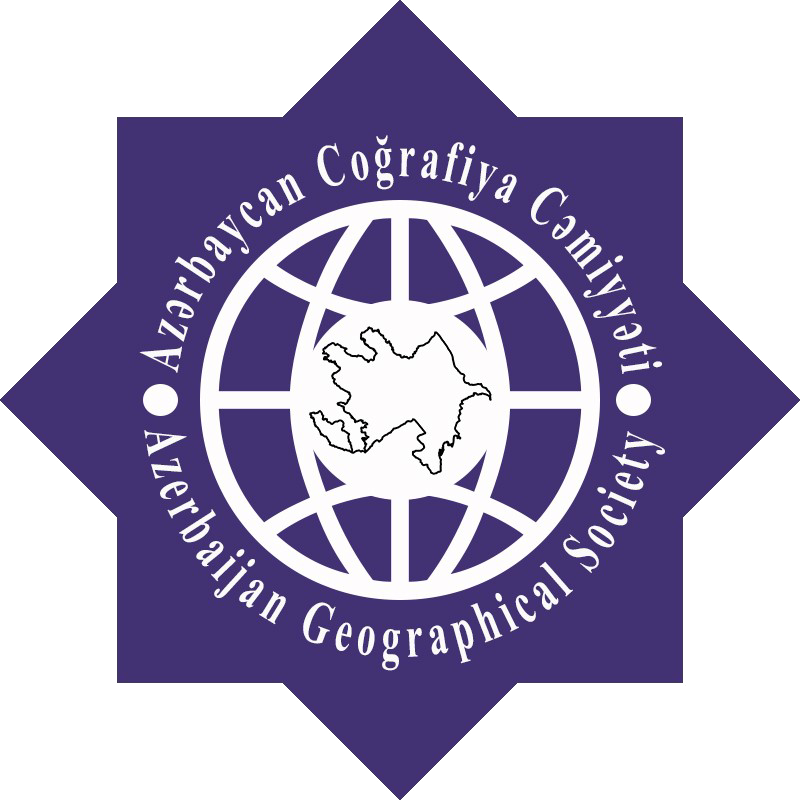STUDY OF THE IMPACT OF POPULATION SETTLEMENT ON THE LANDSCAPE IN THE PLAINS ALONG THE ARAZ RİVER
L.H.Hasanaliyeva
Annotation. The article is devoted to population settlement and its modern problems in the liberated areas of around Araz plains located on the southeastern slope of the Lesser Caucasus. In addition, the negative effects of the Armenian invaders on the ecological conditions of the area during the occupation period are investigated. Due to the impact on forest complexes, rare tree and plant species, fauna and flora as a result of military aggression, soil vegetation has changed dramatically. Natural terrain complexes and landscapes have undergone transformation. Actual materials about the pollution of water bodies in the area, the destruction of residential areas and the farms of the people living in them have been provided. The facts of the destruction of abandoned settlements, historical, cultural and natural monuments, and violation of the ecological conditions of the area were investigated. There is a need to collect more accurate and scientifically based geographical data of resettlement in the freed areas of around Araz plains and to create a GIS database based on it, to compile thematic maps with various contents. Assessment of geo-ecological conditions and natural resource potential based on the settlement of the population in the liberated regions of Azerbaijan is one of the upcoming tasks. The effects of population settlement on landscape ecological conditions and the development of natural resource potential in this territory of Azerbaijan have been evaluated from various aspects.
Keywords: Settlement, population settlement, ecological conditions, landscape, Lesser Caucasus, plains around Araz river, GIS.
REFERENCES
- Azərbaycan Respublikasının coğrafiyası, III cild, Regional coğrafiya, Bakı: 2015, 400 s.
- Azərbaycan Respublikasının 1999-cu il siyahıyaalınmasının yekunları, I c. Əhalinin sayı, cins, yaş tərkibi, Bakı: DSK, 2000, 565 s.
- Azərbaycan Respublikasının 2009-cu il siyahıyaalınmasının yekunları, I c. Əhalinin sayı, cins, yaş tərkibi, Bakı: Səda, DSK, 2010, 629 s.
- Azərbaycanın demoqrafik göstəriciləri. Əhalinin sayı, cins, yaş tərkibi, Bakı: 9 №li kiçik müəssisə, DSK, 2021, 140 s.
- Eminov Z.N. Azərbaycanın əhalisi, Bakı: Çıraq, 2005, 560 s.
- Əlizadə E.K. Kiçik Qafqazın şərq hissəsinin kosmik şəkillərinin morfogenetik deşifrlənməsi. Azərb. Coğrafiya Cəmiyyətinin VI qurultayının materialları. Bakı, 1990, s. 82-83.
- İsmayılov M.C. Landşaftların fəaliyyət intensivliyinin onun məhsuldarlığına təsirinin öyrənilməsi. Dağlıq ölkələrin müasir ekoloji-coğrafi problemləri. ACC-nin əsərləri. VII cild. Bakı, 2001, s. 27-35
- Qəribov Y.Ə., Məmmədbəyov E.Ş., Yunusov M.İ. Kiçik Qafqazın cənub-şərq yamacı landşaftlarının antropogen təsirlərlə dəyişilməsi (aerokosmik materiallar əsasında), AMEA, Yer elmləri, Xəbərlər, № 3, Bakı: Nafta-Press, 1998, s. 28-32
- Qəribov Y.Ə. Azərbaycan Respublikasının müasir landşaftlarının antropogen transformasiyası. Bakı: Mars Print, 2011, 299 s.
- Qəribov Y.Ə. Azərbaycan Respublikasının təbii landşaftlarının optimallaşdırılması. Bakı: AzTU mətbəəsi, 2012, 216 s.
- Mehbalıyev E.Q. Azərbaycanda məskunlaşmanın təkmilləşdirilməsi haqqında, AMEA, Yer elmləri, Xəbərlər, № 3, Bakı: Nafta-Press, 1998, s. 95-98.
- Müseyibov M.A. Azərbaycanın fiziki coğrafiyası. Bakı: Maarif, 1998, s. 62-109.
Publication Date: October 28, 2022
Download the article
